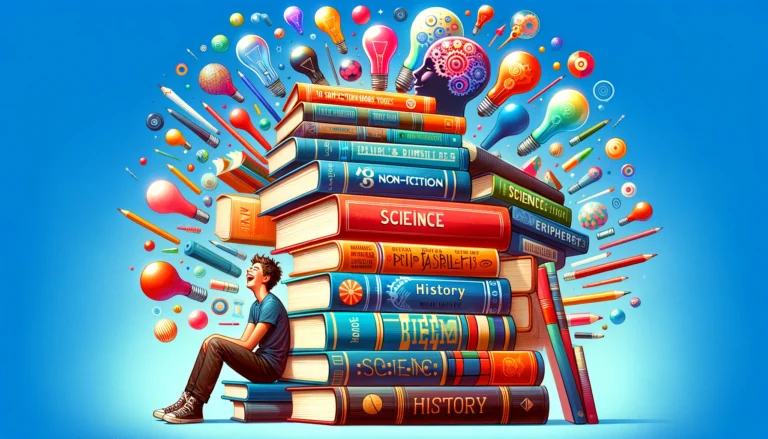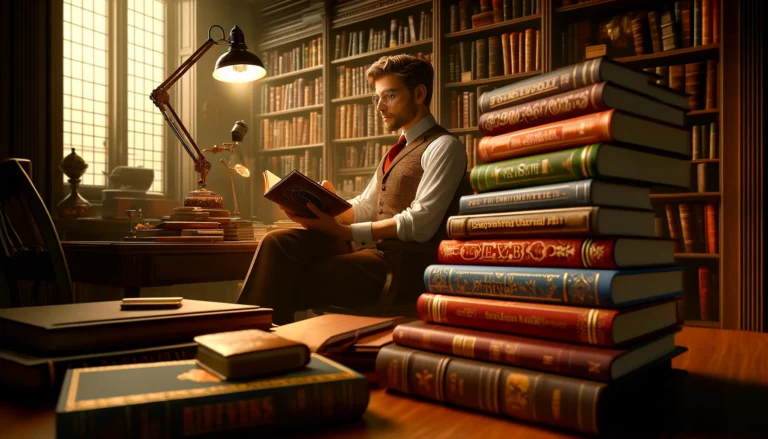Introduction: A Glimpse into the Roaring Twenties
Welcome, dear readers, to a journey back in time, to an era of unparalleled extravagance and complex human emotions, through the lens of “The Great Gatsby” by F. Scott Fitzgerald. This novel, a mirror reflecting the dazzling yet disillusioned 1920s America, invites us into a world where dreams clash with reality, and where the pursuit of happiness takes on hues far beyond the simple black and white.
Overview: The Allure of the American Dream
At its heart, “The Great Gatsby” unfurls the story of Jay Gatsby, a man whose life is a testament to the power of dreams and the relentless pursuit of a lost love. Gatsby’s lavish parties on Long Island’s West Egg, designed to recapture the affection of Daisy Buchanan, are the backdrop against which Fitzgerald explores themes of ambition, love, and the corruption of the American Dream.
Key Concepts: Dreams Versus Reality
Fitzgerald masterfully weaves a narrative that exposes the fragility of the American Dream, juxtaposing Gatsby’s idealistic pursuit with the stark reality of societal decay and moral emptiness. This dichotomy invites us to reflect on our own aspirations and the lengths we are willing to go to achieve them.
Personal Insights: The Echoes of Gatsby in Modern Lives
Reading “The Great Gatsby” stirred a deep reflection within me about the nature of obsession and the illusion of a singular path to happiness. Gatsby’s fixation on recreating the past reminds us that sometimes, in the chase of what we believe will bring us joy, we lose sight of the beauty and potential of the present.
Vivid Imagery and Emotional Depth
Fitzgerald’s prose is a kaleidoscope of vivid imagery and deep emotional currents. One can almost hear the jazz notes floating in the air of Gatsby’s parties and see the green light at the end of Daisy’s dock, symbolizing the ever-elusive dream. “Gatsby believed in the green light, the orogastric future that year by year recedes before us. It eluded us then, but that’s no matter tomorrow we will run faster, stretch out our arms farther. And one fine morning This quote encapsulates the eternal hope and perpetual disillusionment that defines the human condition.
Strengths and Weaknesses: A Critical View
The strength of Fitzgerald’s narrative lies in its rich character development and the precision with which it captures the zeitgeist of the Roaring Twenties. However, some readers might find the characters’ preoccupations somewhat distant from today’s challenges, potentially limiting the novel’s relatability.
Real-Life Applications: Learning from Gatsby’s Quest
Gatsby’s story teaches us the peril of anchoring our happiness to external validations or past memories. In our quest for personal development, it is vital to cultivate resilience and find joy in our present circumstances, embracing change as the only constant.
Engaging Language and Persuasive Arguments
“The Great Gatsby” is more than a novel; it is a cautionary tale that implores us to examine the foundations of our desires and ambitions. It challenges us to question the very nature of success and happiness in a world that often measures worth by material possessions and social status.
Conclusion: A Timeless Exploration of the Human Heart
As we close the chapter on “The Great Gatsby,” we are left with a lingering sense of introspection about the dreams that drive us and the realities we live in. Fitzgerald’s masterpiece remains a compelling exploration of the human heart, offering insights that resonate as deeply today as they did nearly a century ago.
In embracing Gatsby’s story, we are invited to reflect on our own lives, to reconsider what we chase and why, and to find beauty in the journey, not just the destination. For those who have yet to discover this timeless classic, prepare to embark on a journey that transcends the written word, touching the very core of the human experience.






